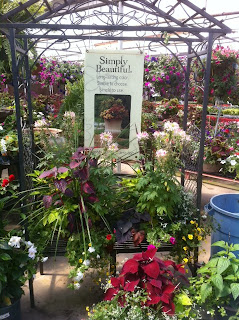So what can we do to eliminate “Plant Blindness?” Obviously there’s not one answer but I have a few ideas.
- Add another sense. Some plants have fragrance that attracts attention, but not all of them. So why not add a moving element – a water feature, tall grasses that blow in the wind, animatronic elements, etc.
- Break all of the rules. Remember painted poinsettias? They certainly broke the rules and they sold well for a couple years. The Chicago Park District painted some dead trees with bright-colored paint and got more emails from happy residents than they ever received for a stunning landscape installation. Even something as simple as an upside down tomato planter can grab attention – just because it is unexpected.
- Raise the plants up to eye level. Maybe we don’t notice plants because they are on the ground? If we walk around looking down, we’ll no doubt run into things. If we look at garden beds while driving, we’ll crash. Landscape rubbernecking might be more dangerous than texting while driving! Lift your plants off the ground in big containers and elevate them on unique risers or natural elements like rocks and stumps. Make gardens an “in your face” experience.
Those are just a couple ideas that popped into my head. I actually think some of the blindness comes from the fact that life seems to be moving faster than ever and it’s really hard to focus on anything. But the more we remind people to look at plants, the more they will see them.
One final way to reduce blindness is to promote more than plants. Promote the value they bring to our quality of life!







